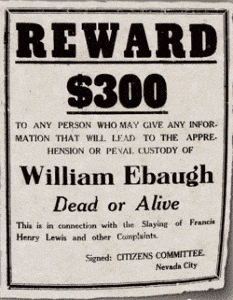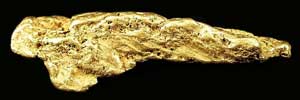
The earliest settlement in Nevada County was made in the summer of 1848 at a place called Rose’s Corral which was located between the Anthony House and Bridgeport. Early in the spring of 1849 a group of mountaineers from Oregon known as the Greenwood Company mined for gold at Illinois Bar on the South Yuba River. They were followed by emigrants from Indiana. In the fall of 1849, the Greenwood Company made winter camp at Jefferson, and the Indiana group moved further upstream to Washington. It was that same autumn that Captain John Pennington’s party struck rich diggings on Deer Creek and built the first cabin on Gold Run, the site that was to become Nevada City. (Source Ed Tyson)
Originally a mining camp founded along Deer Creek in 1849, Nevada City rapidly became the largest and wealthiest mining town in California. At one point, Nevada City was the third largest city in California with a population of 10,000. Nevada City’s good fortune allowed miners and settlers to enjoy plush gambling establishments, hotels, saloons, and stores. However, like many big cities that sprang up quickly during the rush for instant wealth, early Nevada City shared a darker side of claim jumping, murder, brothels and opium dens.

Photo courtesy of Gold Premier
By the 1850’s Nevada City’s wealth began to wane, and as miners moved on in search of new claims and stories of gold and riches, a quiet and quaint city emerged. Two firestorms in 1856 and 1863 raced through Nevada City almost completely annihilating the town. The beautiful east coast architecture that stands today is testament to the will of the people of Nevada City who rebuilt the town completely not once but twice.
Nevada County was created in 1851 from parts of Yuba County. This creation was due to the increase in population in the area and the distance necessary to travel to courts which made it necessary to create a new county.
The county was named after the mining town of Nevada City, a name derived from the term “Sierra Nevada.” The word nevada in Spanish means “snowy” or “snow-covered.” Snow falls at the elevation where gold was pulled from Deer Creek. Nevada City has carried many monikers through its history; Caldwell’s Upper Store, Coyoteville, and Deer Creek Dry Diggings, but Nevada was chosen in the 1850s to give the town a cultured name.
In 1851 the newly formed Nevada County mimicked the name. The State of Nevada used the name 10 years later in 1861. The region came to life in the gold rush of 1849. Many historical sites remain to mark the birth of this important region in California’s formative years. Among them are the Nevada Theatre in Nevada City, the oldest theater built in California in the year of 1865. It operates to this day and once hosted Mark Twain among other historical figures. The old 5-mile (8.0 km) house stagecoach stop built in 1890, also operates to this day as a provider of hospitality spanning three centuries. This historical site still features “The stagecoach safe” that is on display outside the present day restaurant and is the source of many legends of stagecoach robbers and notorious highwaymen in the California gold rush era. The gold industry in Nevada County thrived into the post WWII days.
The county had many firsts and historic technological moments. The first long-distance telephone in the world, built in 1877 by the Ridge Telephone Company, connected French Corral with French Lake, 58 miles (93 km) away.[2] It was operated by the Milton Mining Company from a building on this site that had been erected about 1853. The Pelton wheel, designed to power gold mines, still drives hydro-electric generators today. Nevada City and Grass Valley were among the first California towns with electric lights. The Olympics, NASA, and virtually every television station around the country utilizes video/broadcasting equipment designed and manufactured by Grass Valley Group, founded in Grass Valley. Electronic medical dosing equipment was first developed and manufactured in Nevada County. The first commercially viable picture-phone was developed in Nevada City. More than fifty high tech and applied tech companies, and more than one thousand hardware and software design and development professionals call Nevada County home. The county is sometimes referred to as the “Silicon Valley of the Sierras.” The arcade video game was born in Nevada County, with Pong.
The Nevada County Narrow Gauge Railroad was built in 1876, and was the only railroad in the West that was never robbed, even though its primary freight was gold. (Builder-owner John Flint Kidder‘s reputation made it clear that he would personally hunt down and kill anyone who tried.) The rail line closed in 1942 and was torn up for scrap.

As an addition to Nevada County history, in Grass Valley the historic Holbrooke Hotel opened in 1851 and housed Mark Twain, Bret Harte, and four U.S. presidents (U.S. Grant, Grover Cleveland, Benjamin Harrison, and James A. Garfield). It remains open today, with a historic bar and dining rooms.
For all your real estate needs
Call or email:
John J. O’Dell Realtor® GRI
Broker/Owner
Civil Engineer
General Contractor
530-263-1091
Email: johnsoldit959@gmail.com
